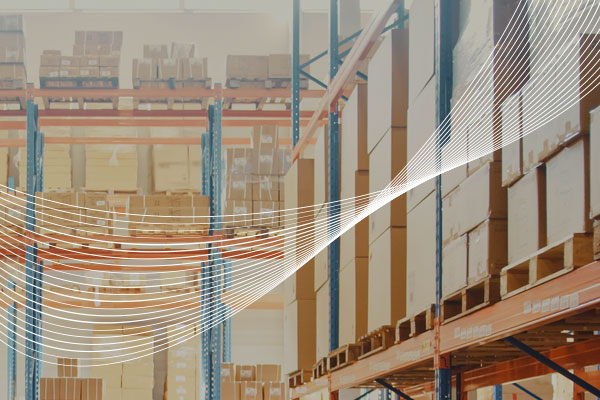Industry Roundtable Series: Auto Parts Distribution in 2022
By Zilliant
Mar 22, 2022
Gene Metheny of Carlisle & Co. joins Zilliant auto and truck parts distribution experts for a wide-ranging panel conversation on the pricing and sales challenges and opportunities in the industry.
Taking a Snapshot of the Auto and Truck Parts Distribution Industry: A Roundtable Discussion
What are the macroeconomic and technology trends impacting the commercial realities of auto and truck part distribution? We convened a panel of seasoned experts to address this overarching question and dig into the details on what distributors in the sector should do in the short- and long-term to gain a foothold in a turbulent, fast-paced environment.
Read on to learn how Zilliant Business Solutions Consultants Paul Kedge and Todd Pate, as well as Carlisle & Company Partner Gene Metheny see the industry in early 2022.
The parts industry has long been thought of as particularly “old school.” Do you agree with that classification, and if so, how has that culture impacted adoption of digital commerce and data science-driven technologies?
Gene Metheny (GM): On the independent aftermarket side, digital commerce is pretty common, and they've got an offering they're selling to consumers anyway, so they needed a good outlet there. On the OEM side, that whole process has been slowed by a bunch of aspects. For instance, who puts the site up? Because if the OEM puts the site up, but the dealer actually sets price then the OEM can't put price out there. And if the dealer fulfills the order, then the OEM can't close the order and fill it. There’s all these complications and layers between what the OEM wants to do and how they play and then how the dealers play.
So, they're all over the map and I think that has slowed the progress for OEMs and dealers in the digital market. They haven't quite figured out how to play right with franchise laws, where to put responsibility and where they're going to fill the order from and that has really limited their ability to grow in that space.
Todd Pate (TP): Is it fair to say that because that OEM business goes through dealers, because it was historically pre-technology and primarily built around the channel, it has resulted in some very complex and confusing pricing structures and rebate models. And so now that you're going through digital transformation and you want to make things more frictionless and more transparent to the end consumer, the way things have been built historically don't really fit that model.
GM: Yes, in truck parts in particular, you have a lot of varied buying power by the fleet.
Because you have very big fleets with a lot of buying power and you have very small fleets with very little buying power. You really want to set retail price and discounted prices based on the highest common denominator and then discount down to where you need to be on a one-off basis so that you are not giving the same discount to everybody. It's basic pricing, selective pricing. The truck guys have evolved in that direction where individual fleets will negotiate with dealers. Then the OEM will participate in that negotiation and help make the dealer whole through some rebate programs. That allows them to price selectively to an individual fleet at a lower price and not erode their profit across the entire channel. So, they get very selective pricing but it does make the world extremely complicated. You have a lot of individual quotes being cut sometimes for one-off deals, sometimes for year-long discounts on different part categories. There is a wide variety of different contract negotiations that go on between the fleet and the dealer and between big fleets and the OEM to support that process.
Paul Kedge (PK): So that description we started off with – “old-school” – implies a kind of an unwillingness to change. But, the roadblock here is more structural. There are so many different handoffs and moving parts that the reason the process has not changed is not so much due to an institutionalized old school approach to thinking about it. It's actually just a very complex market.
GM: It is a very complex market and until you have the tools in place to really administer and see it, it is hard to take it to the next level of management.
TP: I think what's assumed in any “old-school” network is a lot of stability, not a lot of change, particularly when it comes to availability and costs. So when you get into these more highly volatile periods like we're in right now, it just exacerbates it all, then layer that on top of a higher expectation from your customers, who expect more of an eCommerce type of experience. And I think that's where a lot of the friction and pain comes from is the combination of those two things.
We know that many of these distributors still rely on legacy ERP systems and Excel to set and manage price. How does manual price management introduce more challenges?
GM: Just think about the numbers for a second. Truck OEMs have maybe 800,000 to one million SKUs, all at different stages of their life cycle, on different applications of vehicles, running in a given market area with maybe four or five main price points for each SKU, maybe two sources for a SKU with totally different pricing and totally different part numbers. And then they’ve got all these special fleets that get their own price that is negotiated at either an individual part level or at a product level.
Think about how many millions and millions of price points that is and try to imagine running that on Excel. It just boggles the mind, to track all of that and try to make sense out of it in an effective way. I think for those who are still attempting to do that they just don't have the flexibility or the transparency. They end up with inconsistencies everywhere in their pricing process and inconsistencies cost you money. To me, the whole goal of pricing technology is to take a relatively straightforward strategy about how you want to act in the market and translate that across those millions of SKUs and millions of price points.
TP: Exactly. I think there is a big opportunity for these companies that are thinking about making investments in digital transformation. That is, the ability to be flexible and dynamic across your business with respect to price. When costs are going up and prices are going up, you can just generally follow the market up. But when costs start to come back down, it’s those companies that have made the investments that will know where to reduce price and by how much, and what customers are going to be more sensitive versus where they can stick at a higher price. You need a system in place that can detect all those necessary moves and then actually go execute them.
We are currently in a moment of price increases due to inflation and supply shortages. How is this phenomenon playing out for parts distributors?
GM: I think that inflation is both a curse and a blessing. To a large extent, it's a good excuse to raise price since there are supply restrictions, and demand is still high. People want things and they understand that prices are going to go up. Most of the companies I know are doing massive price adjustments that are over and above cost. They're actually adding some margin to the puzzle as they move forward. They don't know when inflation is going to stop, so they want to stay ahead of the game. I think the important thing right now is to collect market data on a regular basis because at some point inflation is going to slow down and when it does, you don't want to run out ahead of it so much that you lose a lot of market share. So, you really need to be on top of: Who's adjusting price when? How much is it moving? When does it stop? When do I stop my ramp up so that I don't put myself in a market share problem?
TP: What you’re describing has come up again and again with our prospects in auto parts and other highly volatile commodity businesses that are seeing these huge increases right now. You might be able to take your prices up without any real pricing intelligence, in a very broad, peanut butter spread approach. But let's go ahead and get Zilliant in place so that when the market starts to correct on the cost side, you can be very smart about how you bring prices back down.
PK: All of these factors go back to basic economics and demand and supply. One of the points Gene made about inflation that is particularly acute in the parts business, is the way in which they manage cost. It’s quite regimented with fixed time scales. There's a process and it kicks off on a calendar and a fixed cadence. So, when you start throwing in variations that are material they can't cope because the structures, systems, resources, and everything geared towards it becomes very difficult to manage. The absorption of that cost is a real margin impact for some of these OEMs.
How do the complexities we’ve discussed impact visibility into pricing and, ultimately, profitability?
GM: I would say today, the OEMs don't have super good systems to have visibility of all that data flow and how it affects their total profitability. I don't know any of the truck OEMs today that can go out there and tell you, “This is my profitability for all the sales that end up in this fleet.” They know the volume of sales that are ending up in the fleet, they know the rebates they're paying for that fleet, but they're not tacking that back through the total volume of business at what they sold that dealer, and then what they reimbursed. They don’t then have a complete picture of the waterfall.
If you look at a situation Carlisle and Zilliant are working on for a potential customer right now, their main goal is to put a system in that does all of that and supports that quoting process. That way, I know how much profit I'm expecting to make on that deal, and I monitor that profit over time to see if the volumes and profitability actually turned out the way I expected. Now I can price for those rebates and discounts in my base price that I set to the market.
TP: Because of the massive amounts of data, millions of price changes, and price points, everyone that I've talked to in this space still thinks very traditionally about the kind of information they need to make pricing decisions, because they're limited by just the fear of the magnitude of it all. So I don’t frequently hear the topic of pricing science or really detailed segmentation. Most of the players that we're talking about in the space, they need to get started with a better way to manage price first.
Once they get started and start to get better structures and tools or processes into place, now you can dare to dream about going to the next level and using more of a pricing science and price segmentation approach to how you actually optimize.
As we wrap up, can you share, with all your experience working with these companies, what's one piece of advice you would give them to succeed in 2022 and beyond?
GM: I think number one they must have a good pulse of the market. We're in a rapidly changing environment and you need to be collecting competitive information and keeping very close tabs on a dynamic market. It's changing quickly. We still haven't seen the full effect of the flow of inflation all the way out through the channels. At some point it will stop, and you need to know when that merry-go-round quits. And how to adjust it, adapt to it.
And then secondly, I think you need to put good processes in place to set prices based on competitive market positions and manage the complexity of all your different price points. You need good processes to support that, that are robust, that fit strategically with where you want to play and how you want to position yourself in the market and your offerings. And you're going to need some sort of sophisticated technology to support it.
PK: Well said. I’d add that it is likely that you will need to support dynamic pricing. Even though much of the eCommerce push and the inflationary pressures are due to the pandemic and that will go away at some point, people’s expectations change less quickly. You’ve now got people who are expecting an Amazon experience and that expectation won't fall back to its pre-pandemic “normal.” We're left with a legacy of people's expectations being forever changed and distributors now need to rebase the level at which change is possible and how dynamic their price management processes are. We're not falling back to how it was before that - we need to adjust the pricing process to reflect that going forward rather than assuming that we'll go back to pre-pandemic processes and pre-pandemic industries.



